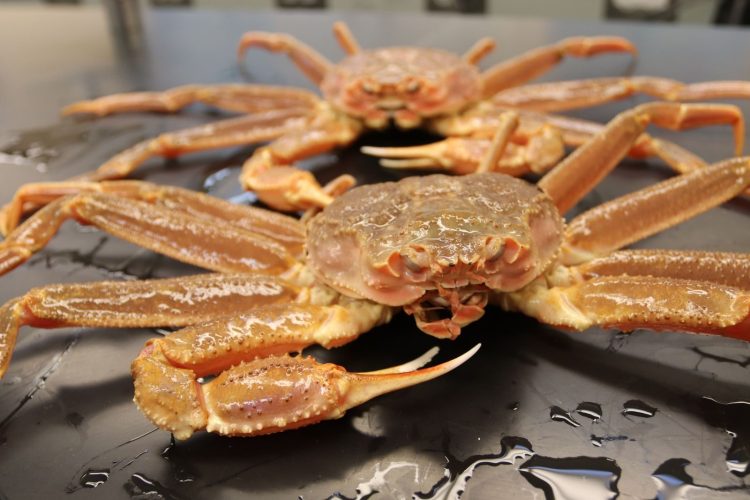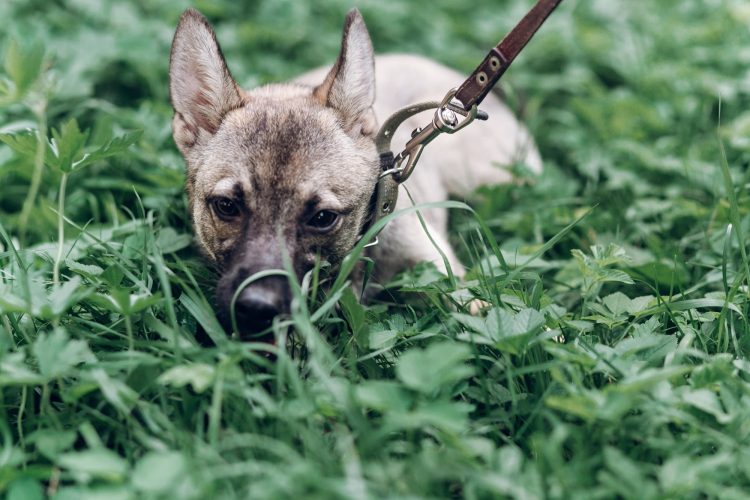Here are the most common types of edible crab you’ll find at Angry Crab Shack and on dining room tables around the U.S. (and around the world).
Dungeness Crab

Dungeness crabs live in the long stretch of coastal waters that border Western North America, stretching from Alaska to Baja, Mexico. Named after the now-gone small down of Dungeness, which was located on Washington state’s Olympic Peninsula, these large, brownish-purple crabs are known for their sweet and succulent pink meat.
Dungeness’ crab is a large species, weighing an average of two to four pounds. According to regulations, only male Dungeness crabs measuring at least 6.25 inches in length can be harvested, and prime season falls in the winter months.
King Crab (also called Alaskan King Crab)

Alternate names for King Crabs include Alaska King Crab, Russian Crab, and Japanese Crab – but no matter what you call it, this crab species is famous for its impressive size. Measuring up to 10 feet and weighing in at up to 25 pounds, this type of crab has a delicate taste, boasting bright white meat bordered with a vibrant red edge.
Despite being an incredibly large crab, only about one-fourth of the crab meat inside is edible (mainly its legs and claws).
Rock Crab aka Snow Crab (also called Spider Crab)

This Atlantic Ocean crab is an East Coast native, usually found residing in rocky, deep waters. Its spindly, spiny legs give it a spider-like appearance, hence the “Spider Crabs” nickname. Some people also refer to these crabs as snow crabs and queen crabs.
Peekytoe Crab

Until the late 1990s, Peekytoe crabs were a lobster fishing by-product that was typically thrown away. But when the species got a rebranding and a new name, they started to get some well-deserved attention. Formerly known as Maine rock or sand crabs (or bay carbs), this type of crab is a fairly new arrival in the seafood scene.
Blue Crab

The stunning bluish-green hue of blue crabs makes them immediately recognizable, at least until they turn bright red after being cooked. Blue crabs are the East Coast’s most prolific species, and those sold on the seafood market typically measure between 3.5 to 5.5 inches and larger.
Soft Shell Crabs

Soft Shell crabs are actually blue crabs that have completed molting, a natural process that allows them to shed their old, small shell and form a new one to fit their larger body. There is a short period of a few days when the crabs are without hard shells during molting. Even then, they’re only truly soft shells for a limited number of hours.
Soft Shell crab is a delicacy, and you eat the whole crab (often deep-fried).
Stone Crab

Stone crab claws are a prized delicacy enjoyed for their large size, sweet flavor, and firm texture. Stone crabs are primarily harvested in the Florida area and only from October 15th through May 15th.
Because only the claws are cooked and eaten, fishermen pull a single claw from each crab and then return them to the ocean. The crabs regenerate their claws within 18 months and are left with a claw to properly defend themselves from predators.




